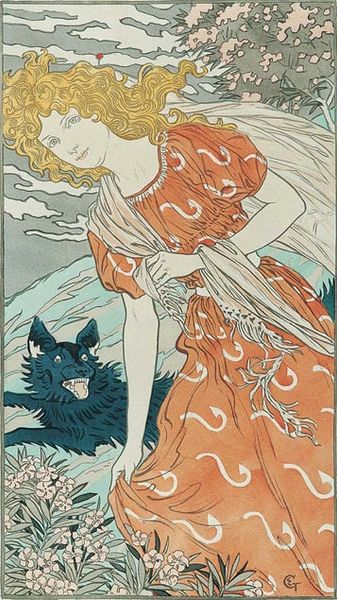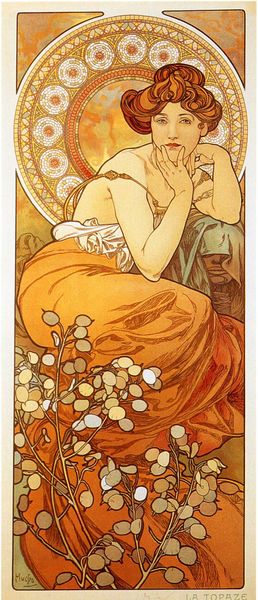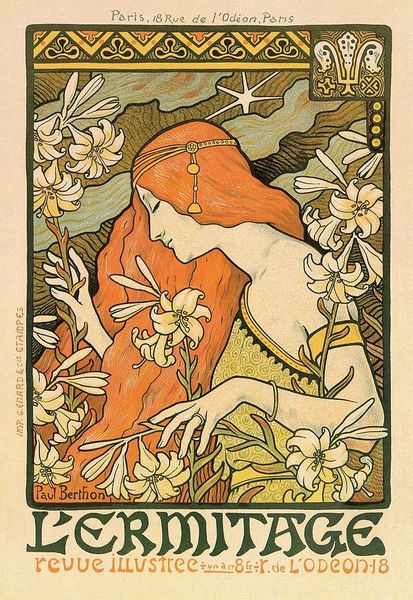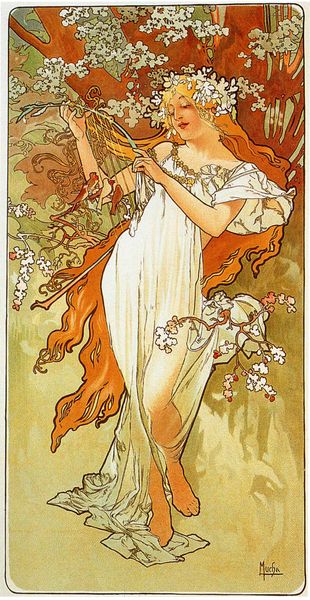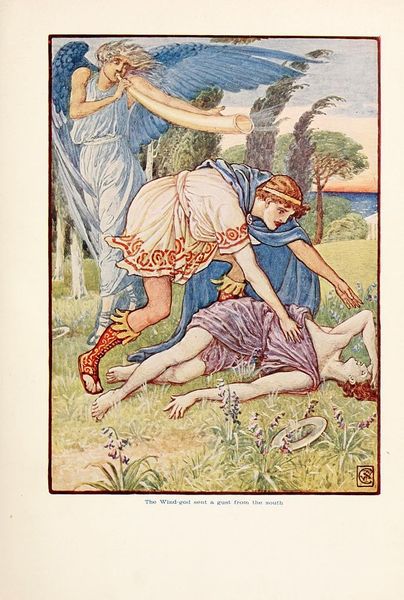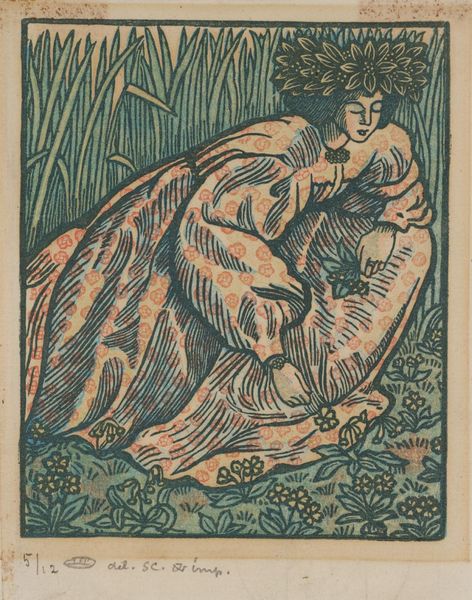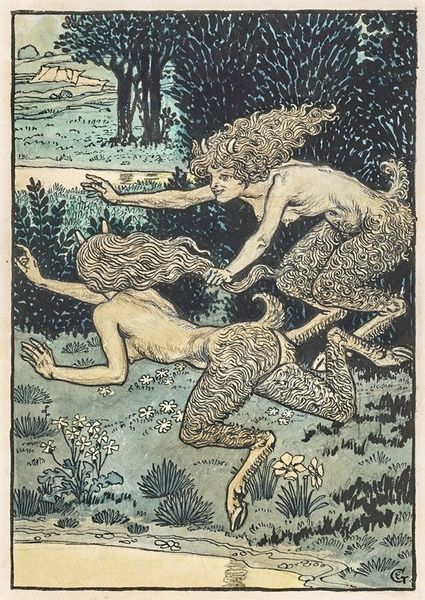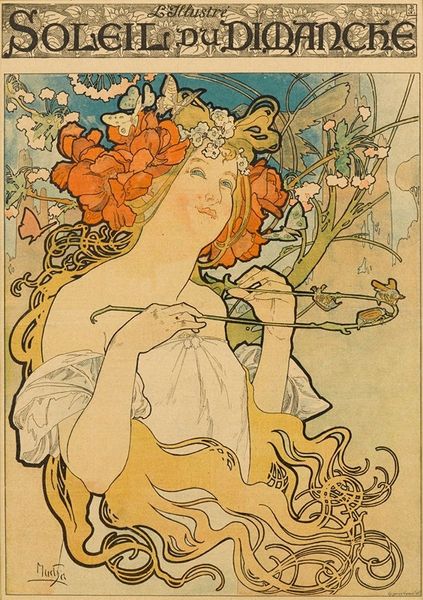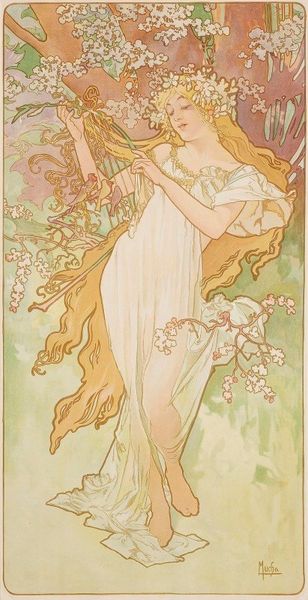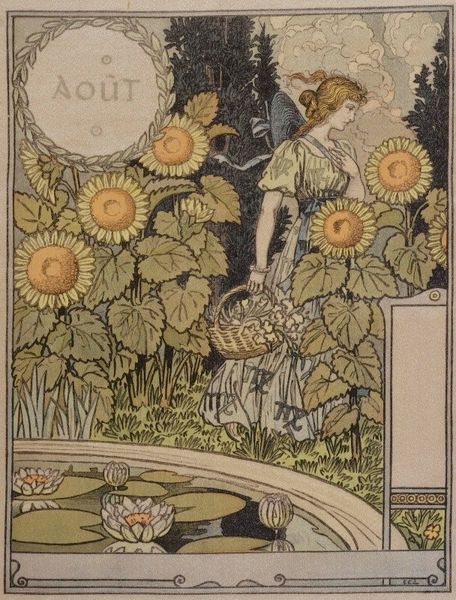
print, poster
#
art-nouveau
# print
#
landscape
#
figuration
#
symbolism
#
poster
Copyright: Public domain
Curator: Immediately, I am drawn to the delicate, ethereal quality of this print. It whispers of spring, renewal... something very delicate. Editor: Indeed, this is "Grafton Gallery, from Les Affiches Illustrees," a print created in 1897 by Eugène Grasset. As the title suggests, it's one of the posters included in a portfolio called Les Affiches Illustrées, aiming to elevate poster design into a legitimate art form, blurring those traditional hierarchies between art and commerce. Curator: Blurring lines… the poster, as medium, makes that happen. Thinking about its creation as a lithograph too, the process democratizes it in some sense, even if the depicted figure evokes a certain elevated class. Editor: Exactly. Grasset was crucial in popularizing Art Nouveau. Notice how the sinuous lines and flowing hair contribute to the decorative, almost flattened aesthetic? Curator: You're right. Everything, even her gown, is linear, and contributes to the picture's structure rather than just representing material objects. The colors, also, they don’t seem particularly natural, do they? Editor: The Grafton Gallery itself, founded in 1893, played a crucial role in introducing continental avant-garde art to Britain, staging early exhibitions of French Impressionism and Post-Impressionism. It fostered a space for radical ideas. It’s a pity that its commercial direction after 1912 relegated it to an interesting historical footnote, no longer as a champion of vanguard art. Curator: The inclusion of the gallery’s name is then almost… advertising, promoting it! We, today, consider Art Nouveau aesthetically, stylistically but in the late 1890’s its potential lay with its production, reproducibility, distribution! The making of this poster – and the money it hoped to generate for all parties involved, artists and businesses, are of paramount importance! Editor: Fascinating to consider Grasset's print both as art and as a marker within the Grafton Gallery’s exhibition history. It really shows how art is bound to socio-economical trends of any given period. Curator: It also reveals a lot about how, through this medium, art becomes an active component of the public space of consumption in modern life! Editor: It’s like a material object with powerful implications of its time that is in full view here. Curator: Thanks to the artist's talent, but thanks to the development of industry, also. Editor: Quite so.
Comments
No comments
Be the first to comment and join the conversation on the ultimate creative platform.
